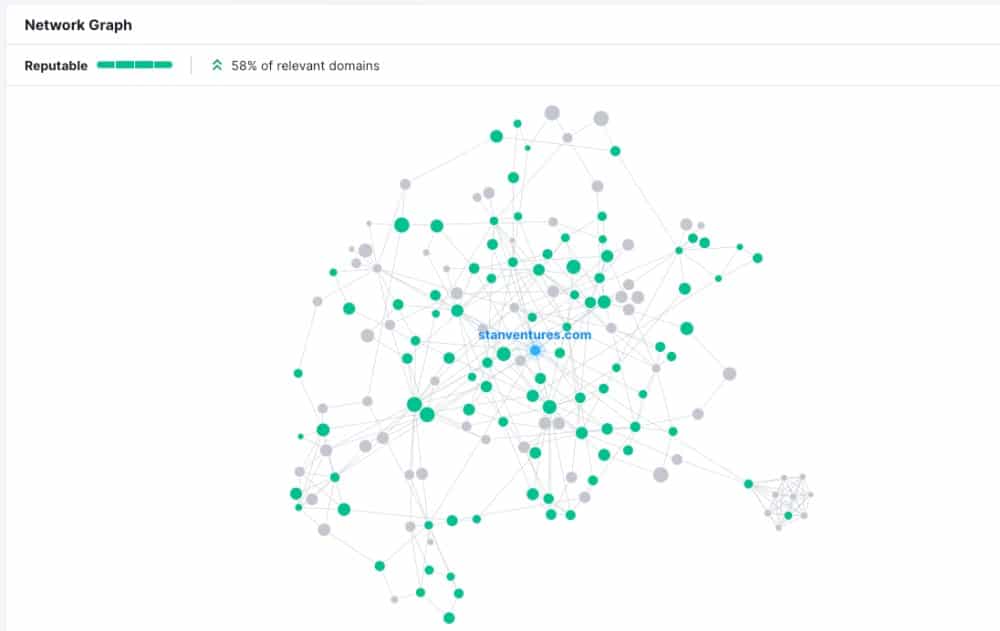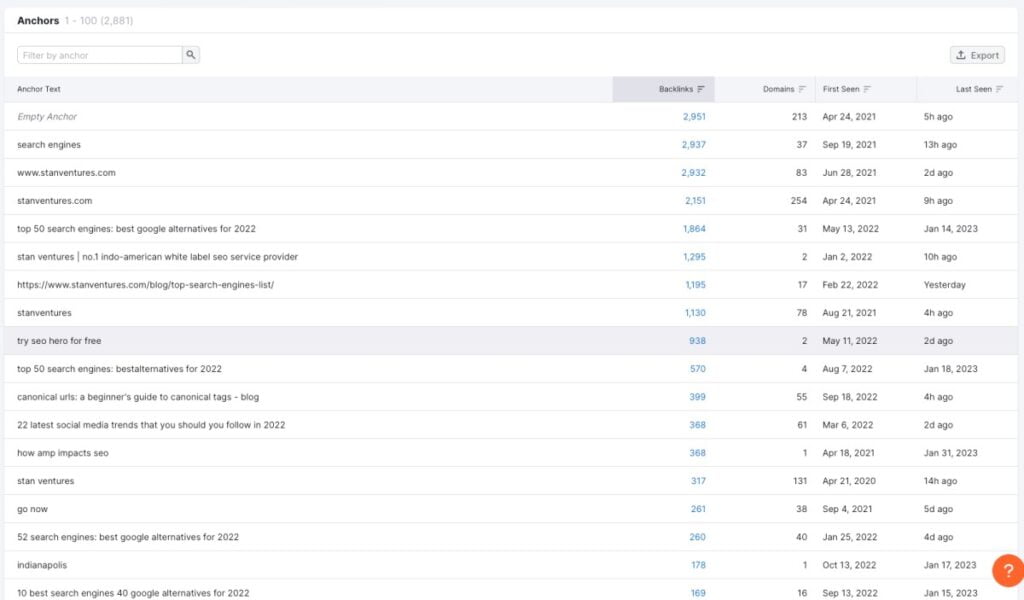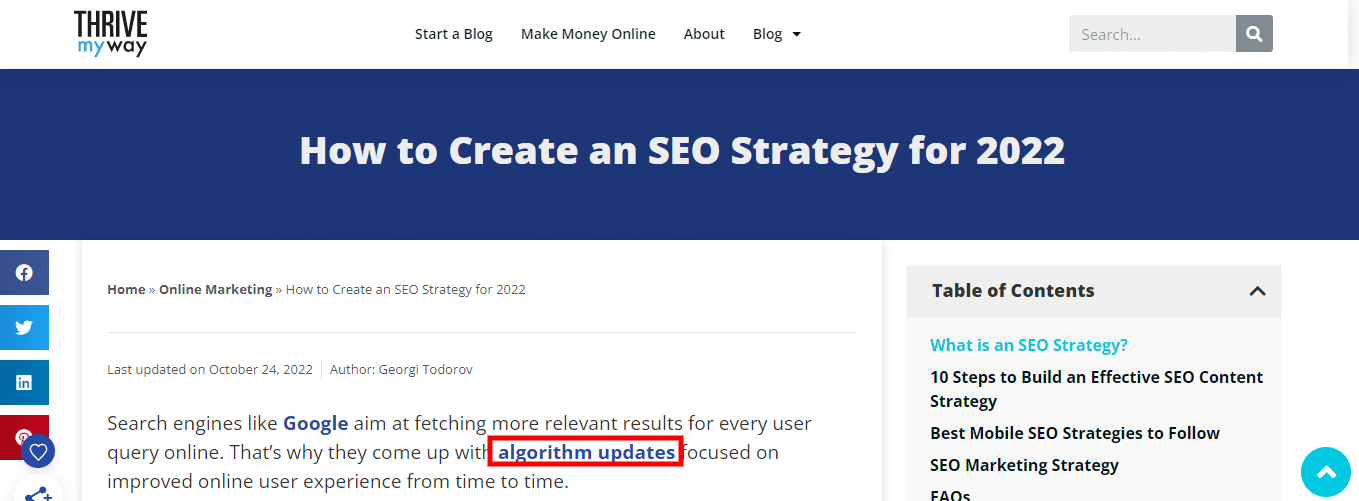How to Check Backlink Quality: A Comprehensive Guide
Did you end up getting new backlinks to your website? Congratulations if you earned them naturally.
But before you get on with the celebration, we recommend you check the backlink quality.
Wondering why?
Not all backlinks are worth having, and a few types of backlinks can do more harm than good.
Additionally, competitors may decide to unleash low-level negative SEO attacks by building low-quality backlinks in bulk, only to see their site fall from Google’s top rankings.
Of course, backlinks are essential for your website’s success; we have created this blog to help you check backlink quality like a pro.
Once you finish reading this article, you will be equipped with the knowledge to raise red flags to agencies and people who try to build low-quality backlinks to your website.
Check the Relevance of the Link
The relevance of a backlink is one of the most important factors to consider when evaluating link quality. A relevant backlink comes from a site that matches your niche.
Powerful backlinks often come from industry-specific, relevant sites. Such links pass on more link juice to your site than the domains that are irrelevant to your niche.

Let me give you an example.
Suppose you are running a fitness website. A backlink you earn from another website belonging to the fitness industry will carry more relevance than a backlink you acquire from a website covering multiple niches.
So, if you want to build high-quality backlinks, avoid sites that deal with anything and opt for those that are very specific to your industry.
The more relevant the backlink, the more link juice it will pass to your site. Ultimately, this will impact your site’s authority and search engine rankings.
You can use SEMrush to check the relevance of backlinks. The network graph feature within SEMrush can help you identify how many reputed websites are linking back to your domain and also the overall link reputation of your website.
Check the Authority of the Referring Domain
The authority of the referring domain (the site that links back to you) is another critical factor that influences link quality.
Domain Authority (DA – Moz), Domain Rating (DR – Ahrefs), or Authority Score (AS- SEMRush) of a website tells you how likely it is to rank in Search Engine Results Pages (SERP).

Typically, the higher the authority of the referring domain, the higher the value of the backlink you get from it.
You can use tools like Moz, Ahrefs, and Semrush to check a website’s authority. These tools are also available as Chrome extensions, and you can install one to check the authority of sites directly from your browser.
So, what’s a good Domain Authority score?
Domain authority is usually measured on a scale of 1 to 100. A score between 50 and 60 is generally good, and anything beyond that is excellent.
Check the Traffic of the Referring Domain
You should never overlook the web traffic rate of the site you build links from. Backlinks fetch your referral traffic.
Given the scenario, knowing the headcount of visitors to the referring domain allows you to estimate the number of visitors who will be coming across your backlink and clicking on it to land on your site.

The more visitors to the referring domain, the higher the probability of your site receiving new visitors. That’s the idea.
With tools like Semrush and Ahrefs, you can estimate the number of monthly visits to any particular website and plan your link-building strategy accordingly.
Check the Trustworthiness of the Referring Domain
With Google having a keen eye for E.E.A.T, checking the trustworthiness of the website the backlink originates from is essential to determine the link quality.
But how do you know a domain is trustworthy?
A trustworthy domain has a good reputation and aligns with ethical standards. That said, make sure you check the corresponding site’s online reviews and social media presence.
A trusted website attracts more positive reviews than negative ones, which is a sign of a good reputation. It also often has an established social media presence with consistent posts and engagements.
Alternatively, you can also leverage tools like Google’s Safe Browsing tool or Norton Safe Web to weed out malware and other security issues. That should tell you how trustworthy a referring domain is.
The more trustworthy the site, the higher the value and quality of the backlink.
Check the Anchor Text of the Link
The anchor text of a backlink is the clickable content that appears as a hyperlink. This anchor text is a crucial parameter for assessing link quality.
Why?
When Google spiders crawl a page and discover a link, they use the link’s anchor text to determine the destination page’s relevance to the referring URL.

A good backlink uses the right anchor text in the content of the referring page to drive the search engine and visitors to a relevant destination.
In other words, The anchor text has to be relevant to the content on the linking page and contain your target keyword or a variation of it.
Again, tools like Ahrefs and SEMrush come in handy to conduct focused keyword research and identify anchor texts to build backlinks that drive traffic to your site and complement your search rankings.
Check the Context of the Link
The content surrounding a backlink gives it context. The context of a backlink you build on an external website has to be relevant to the content on your site and also provide additional information that substantiates the link.
I’ll give you two main reasons why contextual links matter.
First, contextual backlinks are a great way to signal to Google that you’ve earned the backlink genuinely and ultimately earn its trust. This will help improve your chances of the search engine giant counting on you as a reliable source of information in your industry.
Second, contextual backlinks drive visitors to pages that are relevant to their search and add more value to them. That’s a sign of a good user experience, and Google loves it when you deliver more value to users.
You can identify the contextual soundness of a backlink by reading the text that immediately accompanies it.
Do you want to see what a contextual backlink looks like? Here’s an example from the Stan Ventures portfolio.
We earned a backlink from an external site, as you see below. The link is placed in the anchor text “algorithm updates”, which occurs contextually in the backlink.

When a user clicks on the link, they will be directed to our below page, where they can find everything about Google updates, from the newest to the oldest.

As this destination URL provides the user with detailed information related to Google’s algorithm updates, it will add value to them.
Check the Diversity of the Link Profile
A diversified link profile is a must-have in your link quality checklist. A diverse link profile includes backlinks from a wide range of websites, from high authority to low authority.
Wait. What?
Didn’t I tell you earlier that powerful backlinks come from high-authority domains?
Yes. But no worries. I’m not bailing out.
If you have this question in mind- why build links from sites with a diversified link profile when authoritativeness matters?- I was just going to answer that. Let me explain.
As much as any domain must acquire links from high-quality sites, it is equally important to build a natural and trustworthy link profile.

For example, a site with 500 backlinks pointed to it from 100 different domains is more natural than another one with 1000 backlinks from 50 varied domains.
Besides, a natural link profile doesn’t mean all the backlinks to the site should be from high-authority domains. Some links from low authority sites and some more from domains with a moderate authority score may not hurt its credibility.
The blend adds to the naturalness of the site’s link profile and prevents Google from judging the corresponding site based on how it earned its backlinks.
That said, building backlinks from a site with a diverse link profile also increases your website’s credibility.
Wrapping Up
Building a robust, natural link profile is essential for ranking higher in search and attracting more new prospects.
Using the techniques and tools discussed in this write-up, you can check the relevance, authority, trustworthiness, anchor text, context, and diversity of your link profile.
By doing so, you can ensure that your backlinks meet industry standards and contribute to increasing your site’s ranking on SERPs.
